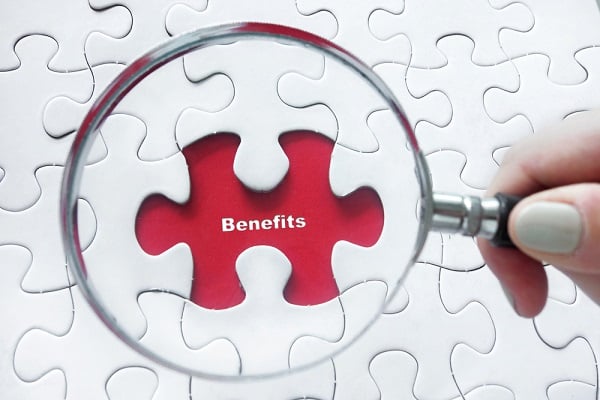 If you haven't taken inventory of all your company benefits and gauged how well they meet the expectations and needs of today's multi-generational workforce, there's no time like the present to start. (Photo: Shutterstock)
If you haven't taken inventory of all your company benefits and gauged how well they meet the expectations and needs of today's multi-generational workforce, there's no time like the present to start. (Photo: Shutterstock)
These days, it's not just traditional benefits like health and retirement plans, equitable pay structures and generous vacation time that make the difference between a good job and a great one.
It's the full package of what you offer that counts and the intangibles carry more weight than you'd think in keeping and retaining people. It's in the culture you create, where people are supportive at work and happy to be social afterward through sponsored outings and company sports teams. It's in your openness to flexible scheduling and working from home. It's in how you help people grow in their careers, with programs to recognize their progress and mentor them, too.
Related: People, processes and culture: The most important parts of a business
It all resonates with more segments of your employee base than you might realize, and falls under the heading of “Total Rewards,” today's more comprehensive employee benefits philosophy and strategy. If you haven't taken inventory of all yours, and gauged how well they meet the expectations and needs of today's multi-generational workforce, there's no time like the present to start.
Total Rewards programs are increasingly utilized among employers, but are not necessarily easy to successfully formulate or match to your employee culture. Building the foundation for a benefits environment that makes everyone happy—from newbie Gen Zs and the Millennials that make up over half the workforce to the not-yet-ready-to-retire Boomers—requires focus and commitment.
Only one in five employers has a fully integrated Total Rewards program approach, under which every facet is holistically pulled together, including the rewards strategy and programs, their delivery, and their communication, for internal and external audiences.
Even organizations that embrace Total Rewards programs to their fullest will find it eye-opening to take an inventory of everything that falls under the umbrella. It's easy to overlook benefits and their potential impact until you start putting everything together.
Other standard offerings include health and wellness benefits such as dental plans, your Employee Assistance Plan (EAP) and, increasingly access to telemedicine services. Work-life balance benefits are also important. Millennials especially, for example, are attracted to work environments that incorporate flextime, but other policies, from paid time off to employee concierge services are important to consider, too.
But other rewards can be easy to overlook, like those that speak to the culture of your organization and intangibles that can make you stand out. Recognition programs and service awards should be identified in your inventory, along with tuition reimbursement plans and mentorships to guide career development.
So how do your Total Rewards program stack up? A World at Work study of U.S. employers showed the biggest 2017 usage gains in three programs: EAPs (96 percent); non-EAP behavioral health plans that cover addiction and psychiatric issues, for example (94 percent); and employee outreach programs to promote wellness and well-being. What declined? Outside seminars and conferences (93 percent); formal performance reviews (91 percent); and employer-issued or reimbursed cellphones (90 percent).
Regardless of how you stack up on these trends, what's more important is how your employees feel about their Total Rewards benefits. While your utilization data will be a good indicator, be sure to ask them which offerings are valued and which aren't.
If you're offering rewards that they don't need, want or care about, the smart thing to do is let go and invest in something else. It's the only way to reinforce an environment where the rewards come from far more than just compensation.
Andrea Goodkin, SPR, SHRM-SCP, is executive vice president of Human Resources Consulting Services and Lauren Slipkowsky, SPR, SHRM-SCP, is human capital consultant manager/director, both at global employee benefits insurance brokerage Hub International.
Read more:
© Touchpoint Markets, All Rights Reserved. Request academic re-use from www.copyright.com. All other uses, submit a request to [email protected]. For more inforrmation visit Asset & Logo Licensing.






